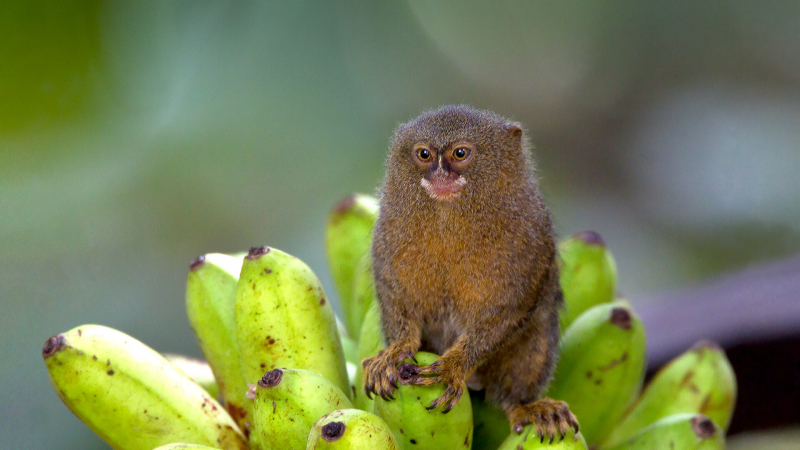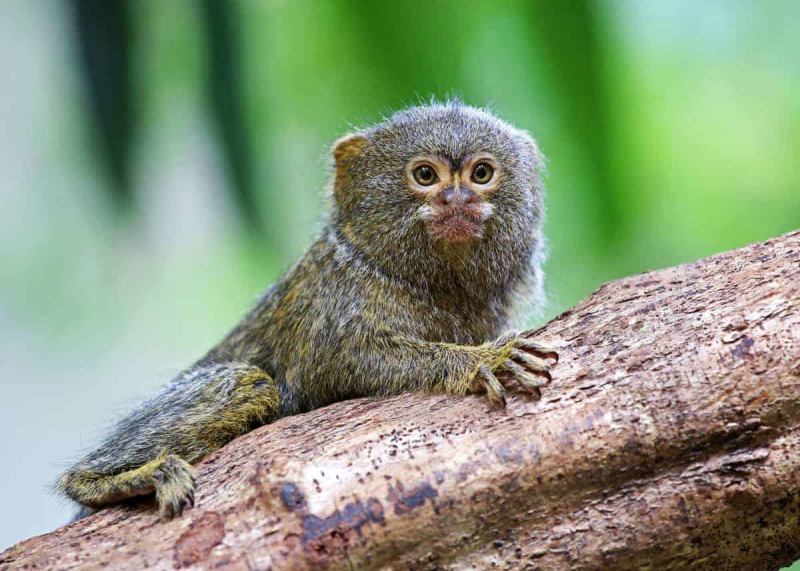Pygmy Marmoset

The Pygmy Marmoset, or genus Cebuella, is a little species of New World monkey that is unique to the western Amazon Basin of South America. At slightly over 100 grams, it is famous for being the smallest primate and monkey in the world. It is a gum-feeding specialist, sometimes known as a gummivore, and is typically found in evergreen and riverbank woods.
A stable troop consists of two to nine members, a dominant male, a breeding female, and up to four successive litters of children. About 83 percent of the pygmy marmoset population lives in these groups. A typical stable troop would have a modal size of six people. Even while families make up the majority of groups, some may also have one or two more adult members. The gang uses a sophisticated system of vocal, chemical, and visual signals to communicate. Depending on how far a call needs to travel, there are three main calling signals. When threatened or to assert their dominance, these monkeys may also perform visual displays. The female can tell the male when she is ready to procreate chemically by secreting chemicals through glands on her chest and vaginal region. The group splits up parental duties when the female gives birth to twins twice a year.











